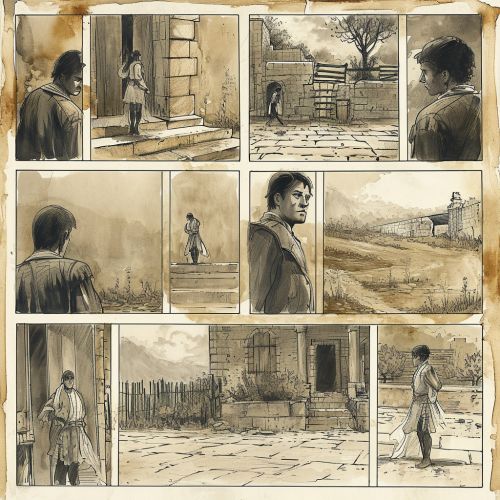Storyboarding
Introduction
Storyboarding is a technique used in various fields, including film, animation, and software design, to visualize the sequence of events or processes. It involves creating a series of illustrations or images displayed in sequence to pre-visualize a motion picture, animation, motion graphic, or interactive media sequence. The process of storyboarding can be traced back to early forms of storytelling and narrative art, but it was significantly developed for pre-visualizing animated films by Walt Disney during the early 1930s.
History
The concept of storyboarding was first developed at Walt Disney Productions during the early 1930s. The first storyboards were used for the creation of the animated short, "Plane Crazy", which was later released as a Mickey Mouse cartoon in 1928. The technique was then used in the production of Snow White and the Seven Dwarfs in 1937, marking the first full-length cel-animated feature in English and Technicolor. The use of storyboarding in film production has been credited to a Disney animator, Webb Smith, who introduced the idea of drawing scenes on separate sheets of paper and pinning them up on a bulletin board to tell a story in sequence, thus creating the first storyboard.


Process
The process of storyboarding starts with a conceptualization phase, where the story is outlined and the major events are defined. This is followed by the visualization phase, where these events are illustrated in a series of panels. Each panel represents a particular scene or event in the story, with notes or descriptions to provide additional information about the scene, such as the characters involved, the setting, and the actions taking place.
The panels are arranged in a sequence that represents the chronological order of events in the story. This sequence can be adjusted and rearranged as needed during the storyboarding process. The final storyboard serves as a visual guide for the production team, helping them understand the sequence of events, the flow of the narrative, and the visual style of the project.
Uses
Storyboarding is used in a variety of fields for different purposes. In film and animation, storyboards are used to pre-visualize the scenes and sequences of a movie or animated feature. They help directors, cinematographers, and animators understand the flow of the narrative and plan the shots and sequences accordingly.
In software design and development, storyboards are used to visualize the user experience and the flow of interactions within the software. They help designers and developers understand the user's journey through the software, identify potential issues and opportunities for improvement, and plan the design and development of the software accordingly.
In business and marketing, storyboards are used to visualize marketing campaigns, business processes, and customer journeys. They help marketers and business analysts understand the sequence of events, identify potential issues and opportunities, and plan the campaign or process accordingly.
Advantages
Storyboarding offers several advantages in the planning and development of projects. It provides a visual representation of the sequence of events, making it easier to understand the flow of the narrative or process. It allows for the exploration of different ideas and concepts, and facilitates the identification of potential issues and opportunities. It also serves as a communication tool, helping teams align on the vision and direction of the project.
Limitations
Despite its advantages, storyboarding also has some limitations. It can be time-consuming and resource-intensive, particularly for complex projects. It may not be suitable for all types of projects, particularly those that are highly abstract or conceptual in nature. It also relies on the ability of the team to visualize and interpret the storyboard, which may vary depending on their skills and experience.
